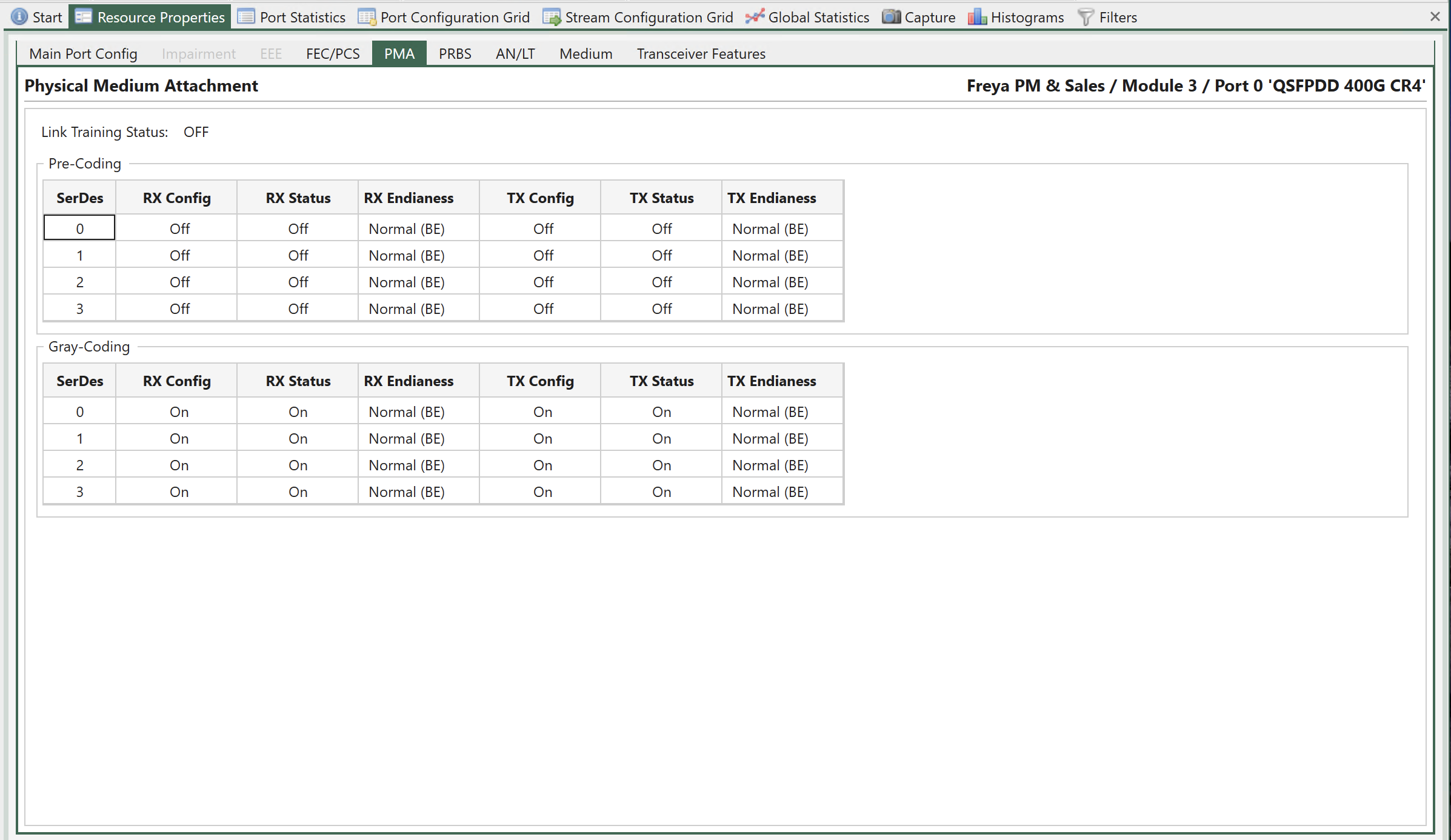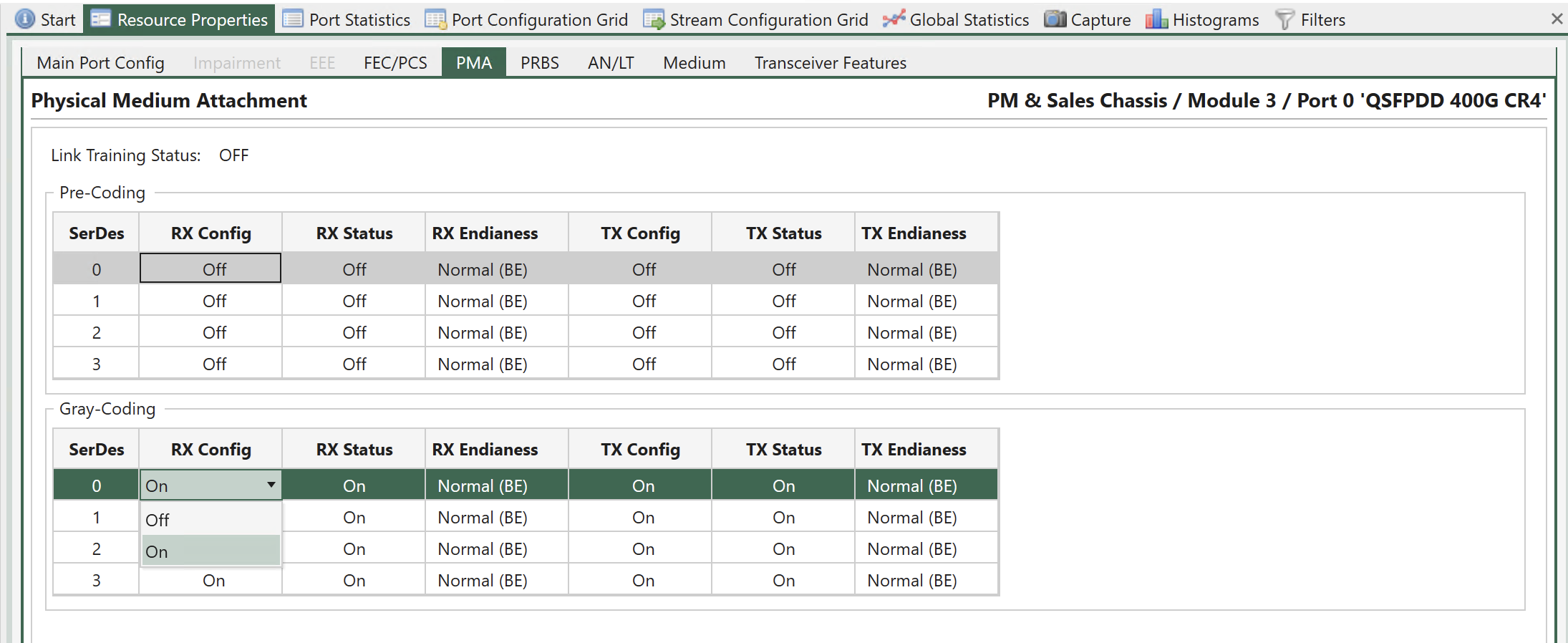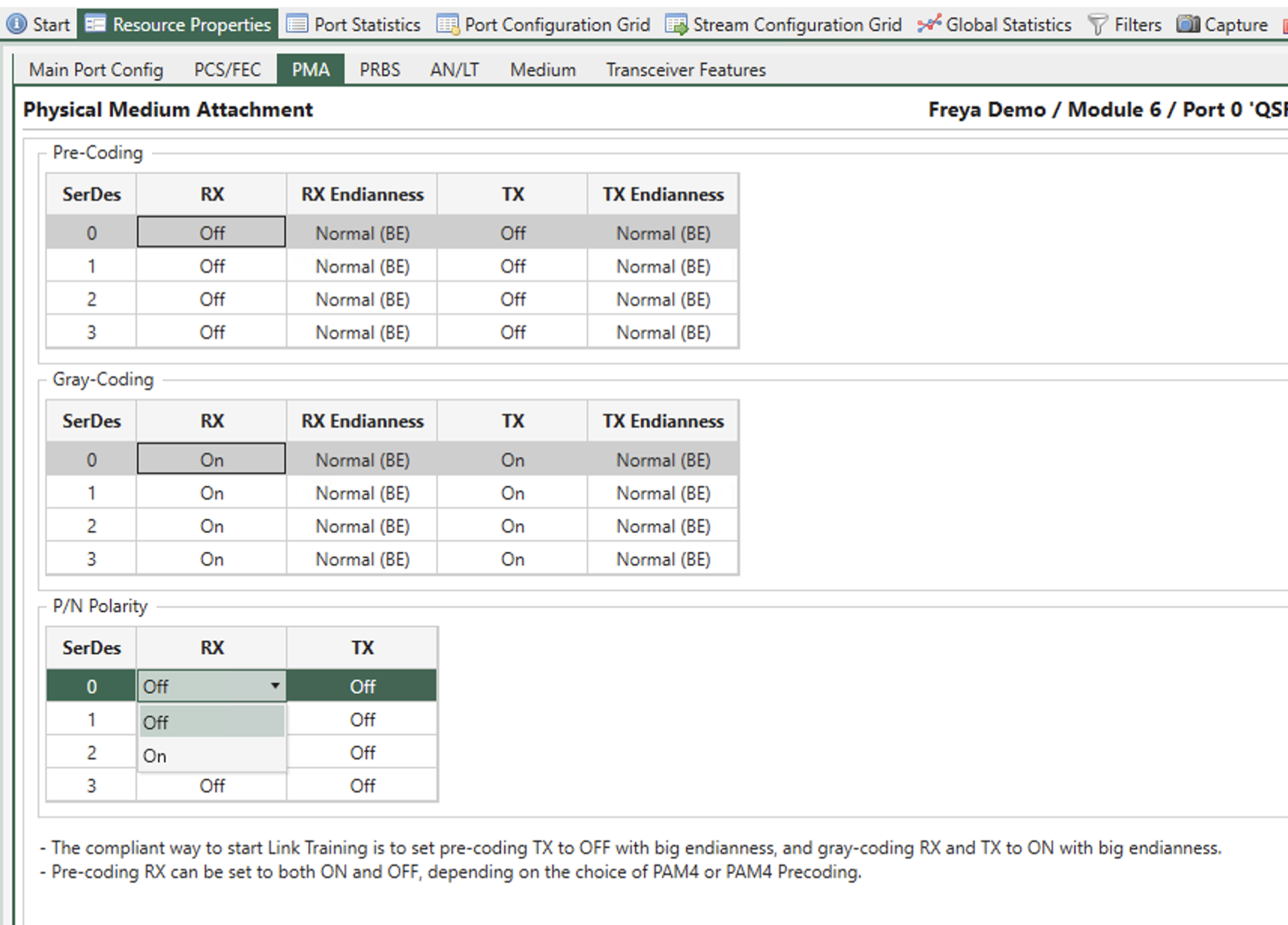PMA
Physical Medium Attachment (PMA) refers to a sublayer within the physical layer (Layer 1) of the OSI model. Its primary role is to manage the interface between the physical medium (the actual transmission medium, whether it’s copper, fiber, or wireless) and the higher layers of the OSI model. PMA is a crucial part of the physical layer in the OSI model. It handles the specifics of transmitting and receiving data over various physical media and interfaces with the higher layers to ensure the successful transmission and reception of data. Different networking technologies and standards have their own PMA implementations tailored to the characteristics of their respective physical media.

Fig. 5.41 Port Properties - PMA
Precoding
PAM4 (Pulse Amplitude Modulation with 4 levels) precoding is a signal processing technique used in high-speed data communication systems to improve the quality and reliability of the transmitted data. Precoding is applied before transmitting PAM4 signals to mitigate impairments and reduce the likelihood of errors during data transmission. It is commonly used in optical and electrical communication systems.
Serdes |
Pre-coding can be configured per Serdes |
RX Config |
You can set the RX to |
RX Status |
The actual RX status. |
RX Endianness |
Endianness in the RX direction, either |
TX Config |
You can set the RX to |
TX Status |
The actual TX status. |
TX Endianness |
Endianness in the TX direction, either |

Fig. 5.42 Port Properties - Precoding Configuration
Gray Coding
Gray coding in PAM4 (Pulse Amplitude Modulation with 4 levels) refers to a specific coding scheme used in optical and electrical communication systems that utilize PAM4 signaling. PAM4 is a modulation scheme that encodes information in the amplitude levels of the transmitted pulses. It uses four different amplitude levels to represent multiple bits of data per symbol.
In PAM4, Gray coding is often employed to ensure that transitions between symbol values are more controlled and have reduced susceptibility to errors during signal transmission. Gray coding for PAM4 is designed to minimize the bit error rate and make the system more robust.
Here’s a simplified example of how Gray coding can be applied in PAM4:
In standard binary coding, you might represent four levels (level 1: 00, level 2: 01, level 3: 10, level 4: 11) using two bits each. However, the transition between these levels can be error-prone due to noise and other factors.
With Gray coding, the mapping is adjusted to minimize the chance of errors during transitions. For PAM4, the Gray code might look something like this:
Level 0 (00) is represented as 00
Level 1 (01) is represented as 01
Level 2 (10) is represented as 11
Level 3 (11) is represented as 10
In this Gray-coded representation, you can see that adjacent symbol values differ in only one bit, reducing the likelihood of errors during transitions between symbols. This improved transition behavior helps in achieving better signal integrity and lower bit error rates in PAM4 communication systems, which is particularly important in high-speed data transmission over optical and electrical channels.
Serdes |
Gray coding can be configured per Serdes |
RX Config |
You can set the RX to |
RX Status |
The actual RX status. |
RX Endianness |
Endianness in the RX direction, either |
TX Config |
You can set the RX to |
TX Status |
The actual TX status |
TX Endianness |
Endianness in the TX direction, either |

Fig. 5.43 Port Properties - Gray Coding Configuration
Important
The compliant way to start Link Training is:
Set pre-coding TX to
OFF,Normal (Big Endian).Set Gray-coding RX and TX to
ON,Normal (Big Endian).Pre-coding RX set
ONwill let the port request PAM4 Precoding from the link partner during Link Training.Pre-coding RX set
OFFwill let the port request PAM4 from the link partner during Link Training.
P/N Polarity
In a SERDES link, you transmit data at high speeds over differential pairs. Each pair has two signals:
P (positive)
N (negative)
Normally, the transmitter sends the differential signal correctly: when the P is high, N is low, and vice versa. However, in real hardware, especially during PCB design or cable assembly, sometimes the P and N wires get accidentally swapped.
You can enable the P/N polarity swap of a SERDES in PMA tab in XenaManager, as shown in the screenshot below. By default, the RX and TX P/N polarity swap is off.

Fig. 5.44 Port Properties - P/N Polarity Configuration